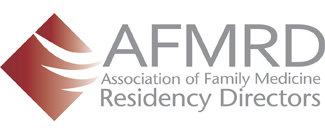Forward
To everything, there is a season ... (Ecclesiastes)
For family medicine residencies and directors, the 1970s may be characterized as the pioneer era. The discipline started with fewer than twenty residency programs, most retooled from the general practice era, and by 1980 had built more than 380 programs. The Residency Assistance Program (RAP) was formed to facilitate the building, and importantly to ensure excellence in what was constructed. The 1980s was a maturational phase, during which the directors of these programs began collectively to perceive a need for an effective political voice, particularly with the Residency Review Committee for Family Practice (RRC-FP). Initial questions included: Could the current family medicine organizations meet their needs? Would there be enough time and energy to add an organization for program directors? Alvin Haley, MD, and Gerald Stuckey, MD, program directors from Indiana, thought so. Daniel Ostergaard, MD, vice president for Education and Scientific Affairs of the American Academy of Family Physicians, was supportive of the development of a new organization, if that's what would work best for program directors', or improving program directors representation in the AAFP, or both.
This book describes how the idea of an organization, having evolved from the maturation of the discipline and its training programs, came to result in the leadership organization known today as the Association of Family Medicine Residency Directors (AFMRD). Thanks are due to many who helped develop the organization, from the members of the 1989 Steering Committee (Alvin Haley, MD, Richard Layton, MD, Charles Payton, MD, and Norman Kahn, MD) with the facilitation and support of Jane Murray, MD, then director of the Division of Education of the AAFP, to the first presidents whose leadership has literally catapulted the organization to a position of prominence in the "family" of family medicine (Richard Layton, MD, Stephen Brunton, MD, Mary Willard, MD, John Saultz, MD, David Mersy, MD, and Penelope Tippy, MD). Rheta Williams served as assistant staff executive, managing the day-to-day operations.
Today, the association continues to accomplish its mission and goals through its many projects and liaisons. Indeed, the energy and vision of the nation's residency directors have produced not only an organization which is a full member in the family of family medicine organizations, but is a respected leader. It represents the nation's residency directors and serves as their political voice. Its first priority goal, representation on the RRC-FP, is now reflected in that program directors hold four of the ten seats, plus an alternate position. It has had unprecedented input to the RRC-FP for revising the written accreditation requirements. It is an organization that boasts more than 95% of those eligible as members. It has provided a network for mutual assistance among residency directors and has built an institute for developing new directors.
In five packed years, there are many stories to be told. We hope you enjoy this book, which catalogues the organization's rapid evolution during its first half decade. We would like to thank all of the members of the AFMRD who continue to invest their energies in training the highest quality family physicians.
